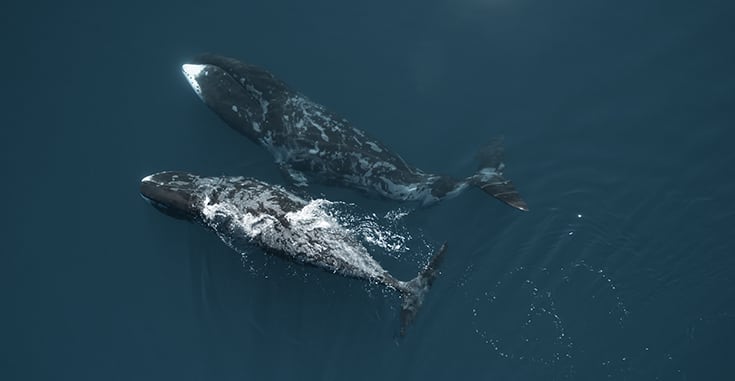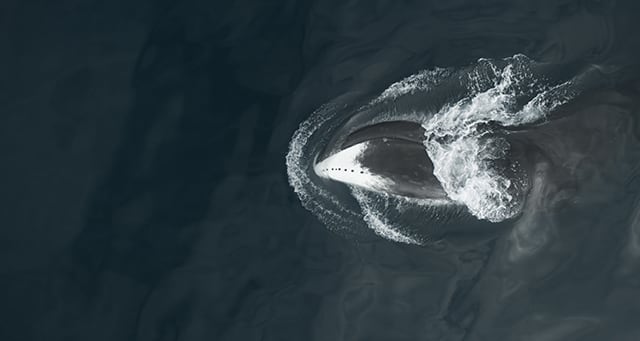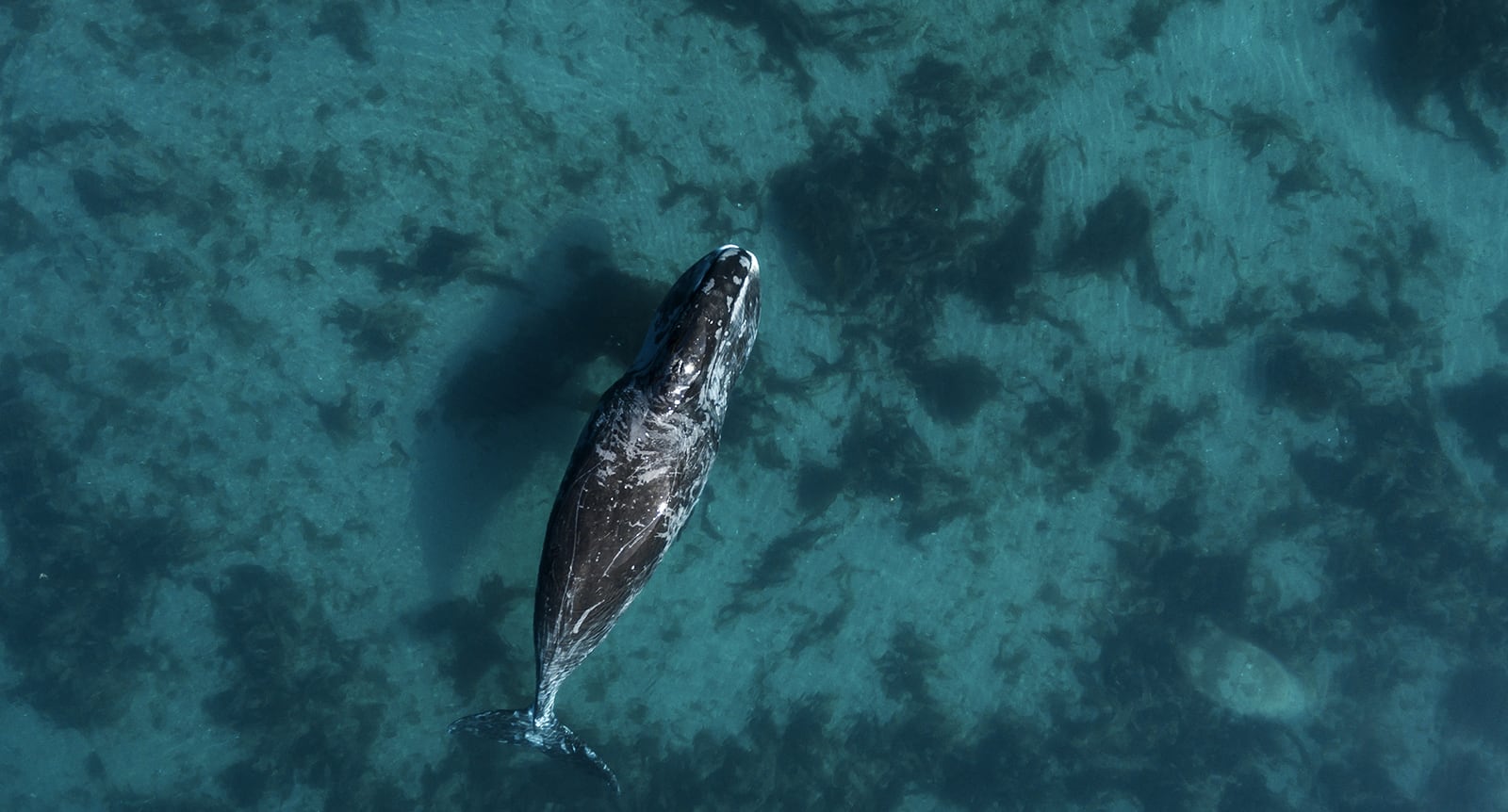Bowhead whales, or just 'bowheads', are a large baleen (mysticete) whale. They are short and broad like all members of the right whale family. Peoples of the North have hunted bowheads along their migratory routes for centuries. Bowheads were also the first Arctic whale species to be harvested intensively by commercial whalers from the 17th century and onwards. They are now considered an endangered species and are protected in Russia and USA. The smaller Okhotsk Sea population, heavily exploited in the past, remains at a dangerously low population of only a few hundred individuals.

Bowhead whales are considered to be the longest-living mammals, they can live beyond 200 years.


Bowhead whales have a dark body with a distinctive white chin and, unlike most cetaceans, do not have a dorsal fin. Bowheads have extremely large heads and stocky bodies. The bow-shaped skull can be over 4,8 m long —about a third of a bowhead’s body length. The bowhead whale also has a 18 in (45 cm) thick blubber layer — thicker than that of any other whale. The bowhead’s massive skull allows them to break through 60-cm-thick sea ice. Bowhead whales often accumulate scars on their bodies from breaking ice, killer whale encounters, entanglement in fishing gear, and propellers. Scientists use these scars to identify individual whales.
99
t
is a maximum weight
59
ft
is a maximum body length
23
in
of sea ice can be broken through by a whale's head